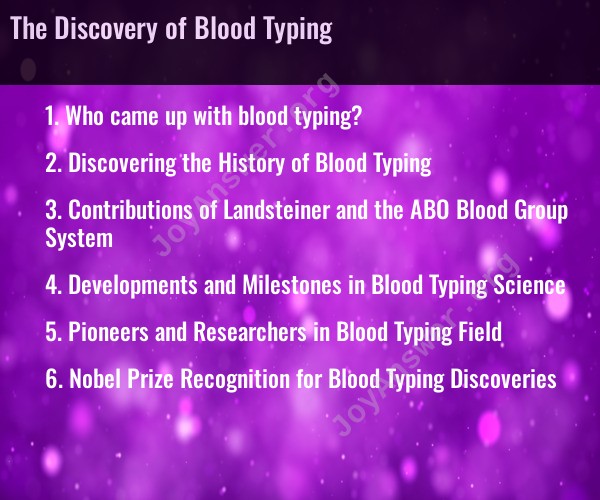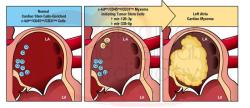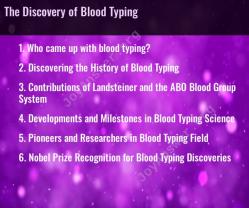Who came up with blood typing?
The discovery of blood typing, particularly the ABO blood group system, is attributed to the Austrian immunologist and pathologist Karl Landsteiner. Karl Landsteiner made this groundbreaking discovery in the early 20th century.
Key points about the discovery of blood typing and Karl Landsteiner's contributions:
Karl Landsteiner: In 1900, Karl Landsteiner published a paper in which he described the presence of different blood groups, specifically the A, B, and O blood types, based on the presence or absence of certain antigens on the surface of red blood cells.
ABO Blood Group System: Landsteiner's work led to the establishment of the ABO blood group system, which is one of the most important blood classification systems. In this system, individuals are classified into four major blood types: A, B, AB, and O, based on the presence or absence of antigens known as A and B antigens.
Rh Factor: Landsteiner's research also laid the foundation for the discovery of the Rh factor (Rhesus factor) in 1937, which further expanded the classification of blood types to include positive (+) or negative (-) variants.
Nobel Prize: In recognition of his groundbreaking work in the field of blood typing and immunology, Karl Landsteiner was awarded the Nobel Prize in Physiology or Medicine in 1930.
Karl Landsteiner's discovery of blood typing and the ABO blood group system revolutionized blood transfusions and had a significant impact on the field of medicine. It allowed for safer and more compatible blood transfusions, reducing the risk of adverse reactions and improving the success of medical procedures involving blood transfusions. His work remains a fundamental part of modern medicine and blood banking.
Discovering the History of Blood Typing
The history of blood typing can be traced back to the early 20th century when scientists began to investigate the causes of transfusion reactions. In 1900, Austrian physician Karl Landsteiner made a groundbreaking discovery that revolutionized blood transfusions. He identified three distinct blood types, which he labeled A, B, and O. This discovery laid the foundation for modern blood typing and paved the way for safe and effective blood transfusions.
Contributions of Landsteiner and the ABO Blood Group System
Landsteiner's identification of the ABO blood group system was a pivotal moment in medical history. His findings revealed that individuals have different blood types due to the presence or absence of specific antigens on the surface of their red blood cells. These antigens, A and B, determine blood type compatibility. When red blood cells with incompatible antigens are mixed, it can lead to a severe reaction known as agglutination, where the red blood cells clump together and can cause life-threatening complications.
Developments and Milestones in Blood Typing Science
Following Landsteiner's discovery, further research led to the identification of additional blood group systems, including the Rh (Rhesus) factor. In 1940, Alexander Wiener and Karl Landsteiner discovered the Rh factor, which plays a crucial role in blood transfusion compatibility. The Rh factor is a protein found on the surface of red blood cells in about 85% of people, making them Rh-positive. Individuals who lack the Rh factor are Rh-negative.
Pioneers and Researchers in Blood Typing Field
Numerous scientists have contributed to the advancement of blood typing science. Some of the notable pioneers include:
Karl Landsteiner: Austrian physician who discovered the ABO blood group system.
Alexander Wiener: American physician and immunologist who discovered the Rh factor.
Ludwik Hirszfeld and Janusz Hirszfeld: Polish-Jewish biologists who made significant contributions to blood typing genetics.
Philip Levine: American physician and immunologist who discovered the MNS blood group system.
Alfred Blalock: American surgeon who performed the first successful blood transfusion between humans.
Nobel Prize Recognition for Blood Typing Discoveries
The groundbreaking discoveries in blood typing have been recognized with Nobel Prizes in Physiology or Medicine:
1930: Karl Landsteiner for his discovery of the ABO blood group system.
1944: Karl Landsteiner and Alexander Wiener for their discovery of the Rh factor.
These Nobel Prizes underscore the immense impact of blood typing on modern medicine and its contribution to saving countless lives through safe and effective blood transfusions.



